
Zoo InternQuest is a seven-week career exploration program for San Diego County high school juniors and seniors. Students have the unique opportunity to meet professionals working for the San Diego Zoo Wildlife Alliance, to learn about their jobs, and then blog about their experience online. Follow their adventures here on the Zoo’s website!
Did you know that the San Diego Zoo is not only a wild animal park but also a botanical garden? The Zoo’s mission to save endangered species applies to plants as well as wild animals. The Zoo has been a plant rescue center since the 1980s where many plant researchers and caretakers pollinate, grow, and tend to plant species from all over the world. One of these horticulturists is Mrs. Christy Powell, who showed the interns around three of the many greenhouses, hothouses and nurseries the Zoo has for its numerous orchids, oak trees and many other plant species.
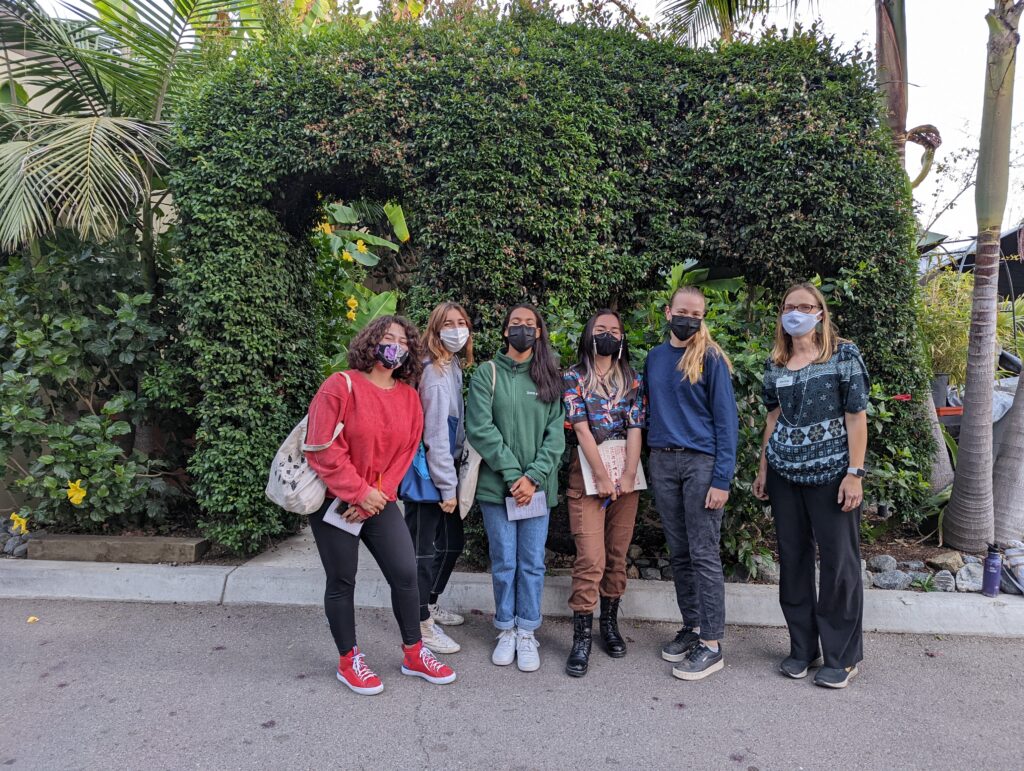
Mrs. Powell’s interest in horticulture stems from her experiences through high school, most notably her participation in Future Farmers of America’s (FFA) horticulture judging contest. FFA is a vibrant organization that utilizes agricultural education to prepare youth for future leadership roles, success in upcoming careers, and one’s own personal growth through hands-on experiences. The goals of FFA held true for Mrs. Powell and her future. It was through the horticulture judging contest in which Mrs. Powell identified ornamental plants, flowers, indoor houseplants, fruits, vegetables, nuts, and more. Her team identified the most species and won the state prize in Indiana, then moving on to the national level. The competitions through the National Junior Horticulture Association opened up a multitude of opportunities for her, including landing her a four-year scholarship to Purdue University. With her scholarship, Mrs. Powell decided to major in Horticulture Science for her bachelor’s degree. During her education, she interned at the Chicago Botanic Garden, where she became enamored by public gardens. She then continued her schooling at Purdue for her master’s degree, studying Agricultural Extension and Education.
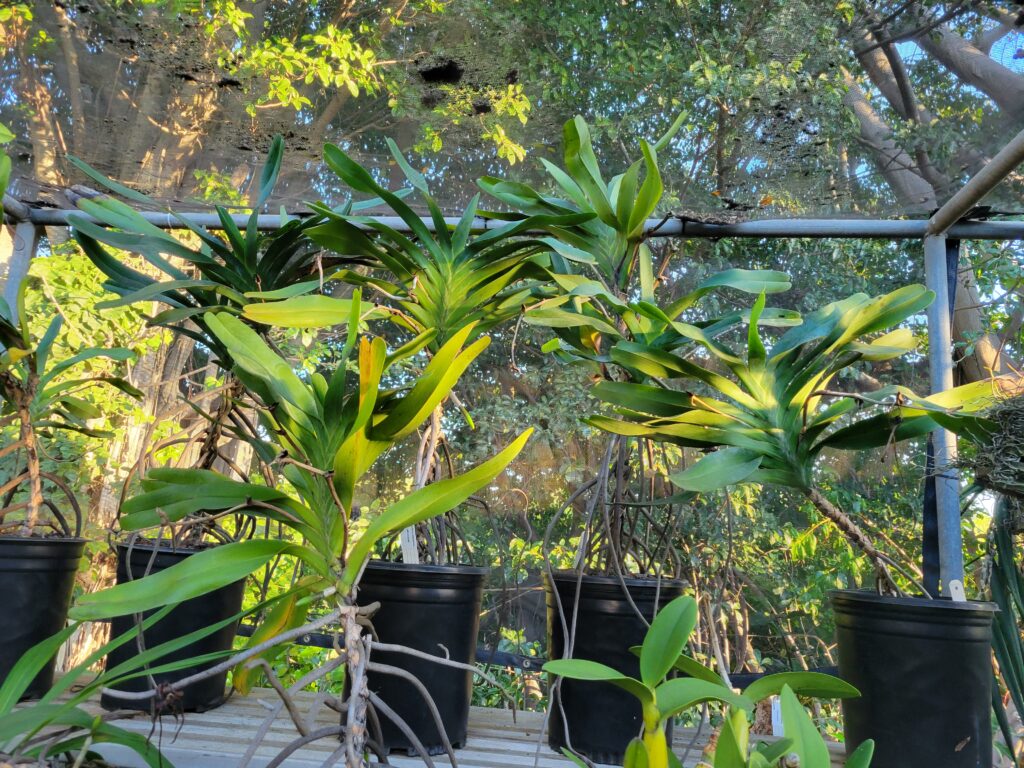
After finishing her studies and getting married, Mrs. Powell moved to San Diego where she found work at the San Diego Zoo as a plant propagator. For thirteen years, Mrs. Powell grew rare and endangered plants from seeds, cuttings, air layers, and in vitro propagation for the Zoo’s botanical collection. In 2015, a new opportunity arose to move up to management and Mrs. Powell seized it, now working as the Horticulture Manager, both managing her employees and coordinating conservation plans. She helps maintain and oversee the Zoo’s nurseries, greenhouses, micropropagation lab, and seed bank. She even helped choose and administer which plants would be featured across Africa Rocks, an area of the Zoo that was renovated in 2017 and features plants and animals from across Africa. Mrs. Powell has worked in a variety of conservation science projects in California, Hawaii, and Palau that included micropropagation efforts, seed collecting and storage, plant care, record keeping, and field conservation initiatives. Overall, Mrs. Powell’s hard work in her care for horticulture science is inspiring and motivating.
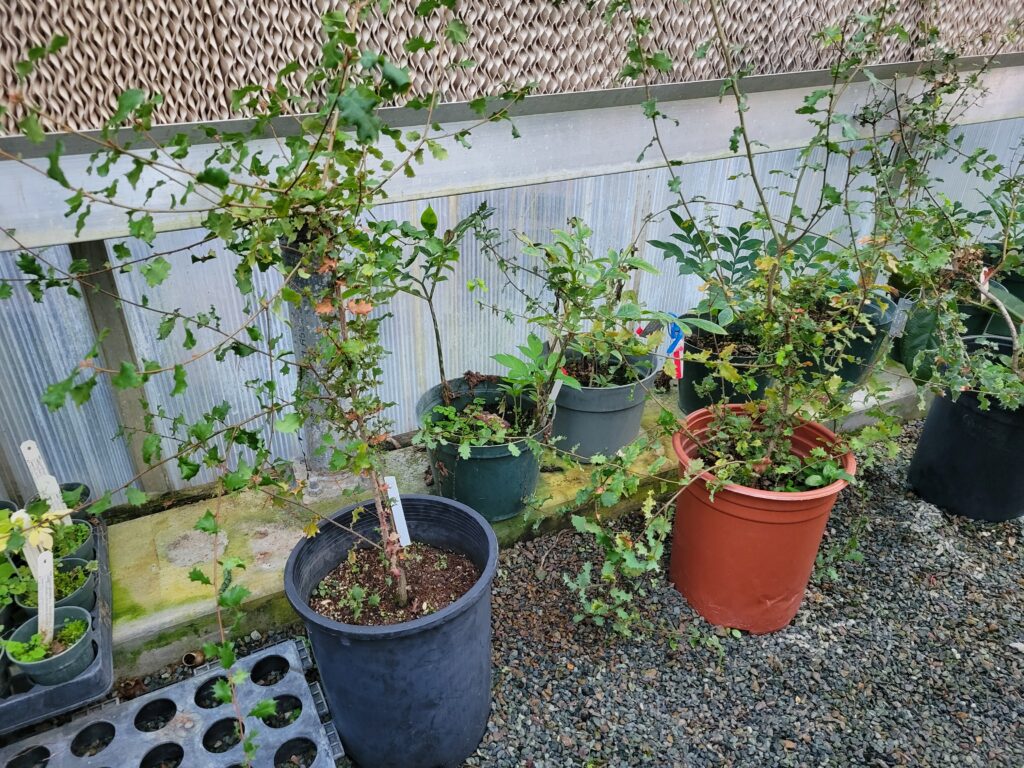
Mrs. Powell has been working at the San Diego Zoo Wildlife Alliance for 19 years; 13 of those years she worked in plant propagation and helped propagate many species of orchids. Plant propagation is the process of breeding plants naturally with the goal of increasing population. The Orchid House functions as a rescue center and has been such since the 1980s. Due to orchids’ beauty and elegance they are highly trafficked, landing many of them on the Convention on International Trade in Endangered Species of Wild Fauna and Flora (CITES) list. Because of this designation, multiple permits are required to export or import these plants. Mrs. Powell works diligently to grow and preserve orchids through micropropagation and hand pollination. With help through grants, she and her team were able to acquire a lab where both these techniques could be used. While Mrs. Powell spends a lot of her time working with orchids, she also coordinates and collaborates with others to save many plant species, such as oaks. Currently there are four species of oaks that are listed as endangered in the County. While many plant seeds can be dried and preserved long-term in a seed bank, oak trees are described as “exceptional” because their seeds (acorns) cannot be preserved this way. The team had to come up with new methods of preservation and storage for these seeds. One practice that works is cryopreservation; much like how the Frozen Zoo stores cellular samples from animal species, the “frozen garden” as Mrs. Powell referred to it, stores acorns and small seedlings that have been frozen to a state of suspended animation. Planting the seeds in a specific lot and nurturing them to full growth is another method that the team has practiced. The public can help in several ways as well. When hiking, stay on paths to avoid trampling plants. Buying plants/orchids from reputable sources and not online is another major help for the plant community. By doing these simple things, we can help protect and preserve the orchids, as well as other endangered plants.
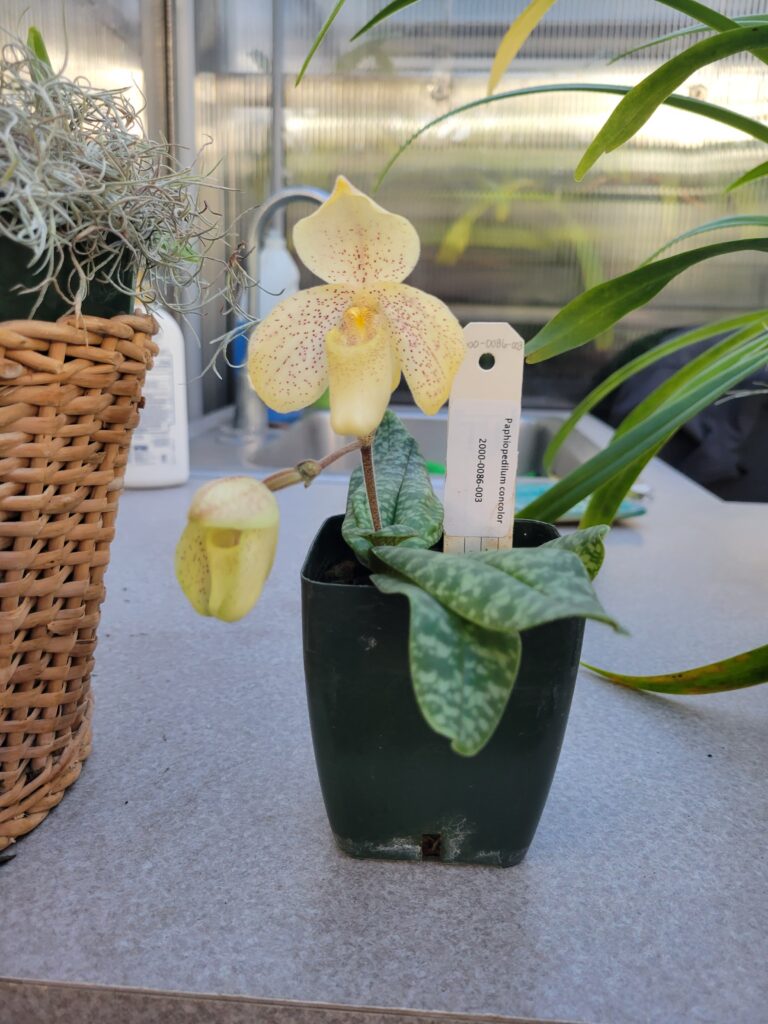

Due to the excitement surrounding the upcoming reopening of the Orchid House at the San Diego Zoo, Mrs. Powell spent a lot of time teaching the interns about their incredible orchid collection. But what distinguishes orchids from other flowers? In order to classify as an orchid, a flower must have three sepals as well as three true petals that reside on the outermost part of the flower. One of the petals is typically highly modified and is referred to as the “lip”. Some orchids have the ability to photosynthesize through their roots, like the Praecoxanthus aphyllus, which is the only plant of the Praecoxanthus genus in the orchid family. Other orchids have aerial roots covered in velamen to protect the plant from moisture loss. These special roots allow for orchids to grow in three different ways, creating separate classifications for each. The most common among tropical orchids are called epiphytes, meaning they grow out of the nooks in trees, their roots absorbing water and nutrients from the air. Terrestrial orchids are exactly as they sound, orchids that grow out of the ground. The last type of orchid is a lithophyte, referring to orchids that can grow on rocks. When asked what type of orchid she works with the most, Mrs. Powell answered paphiopedilum, a type of ‘lady slipper’ orchid. The ‘lady slipper’ makes up a large subfamily of orchids. They have a small pouch hanging downwards that curls up towards the end at the center, guiding pollinators to their pollen. ‘Lady slippers’ have four genera: paphiopedilum, mexipedium, fragrapedium, and saprepedium. Not only are these all related but they all carry that distinct shape to their lip petal. Orchids can be found on every continent except Antarctica, making this recount of Mrs. Powell’s diverse flowers just the tip of the iceberg.
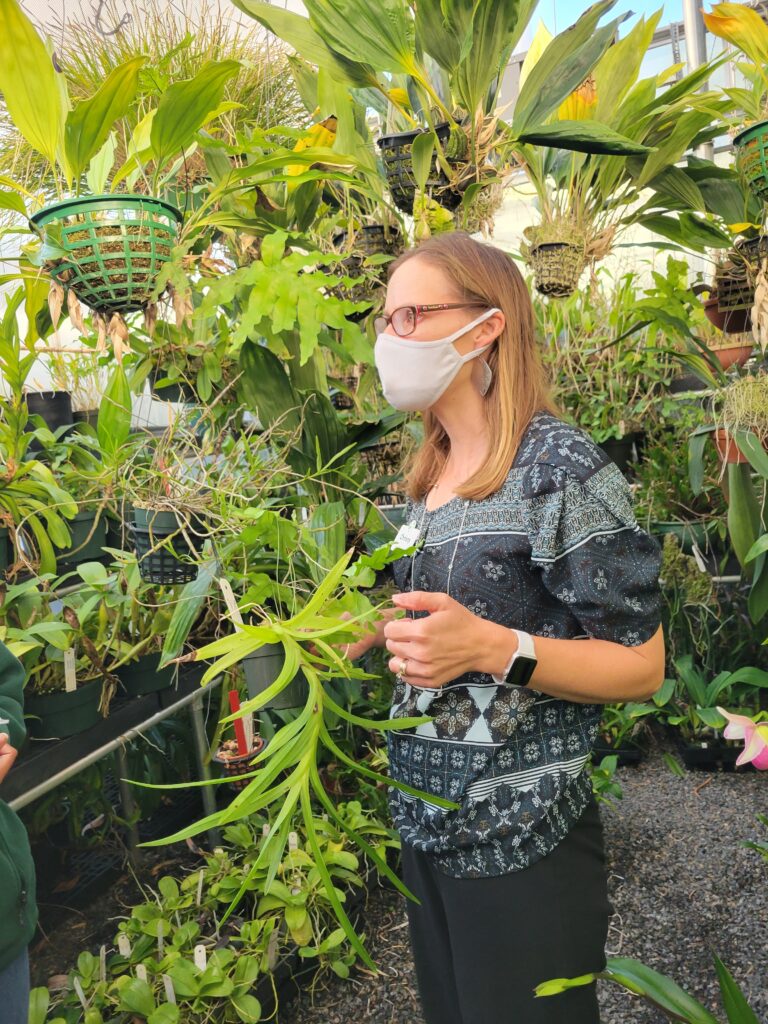
The Zoo is home to over 3,000 species of plants, so it’s no surprise that Mrs. Powell struggled to choose just one as her favorite. After the interns insisted that she could only choose one, she admitted a slight preference towards orchids being her favorite, especially the Dipodium freycinetioides. She also joked that she has a big preference for plants that smell good due to past experiences of working with unbearable smelly plants. In 2010, Mrs. Powell had the opportunity to host a horticulture conference at the Zoo where many people interested in horticulture were able to attend. This event became one of her favorite memories at the Zoo since she was able to meet new people with the same interests as her and show them the variety of plant species the Zoo has to offer. Of all the amazing duties and roles she has in her job, the conservation work is definitely her favorite part. Contributing to save many endangered plant species in her day-to-day routine inspires her to continue this work in the future.
Working as a horticulturist is not an easy career, as many special skills are needed to thrive in this field. Mrs. Powell explained that a lot of knowledge is required for plants to function properly since they depend on a multitude of factors that could critically affect them. These factors may include the location, temperature, soil composition, and interactions with other species surrounding it. Mrs. Powell encouraged internships and hands-on experience for anyone that is motivated to work in this field. These experiences personally helped her gain additional knowledge on how to properly take care of plants and identify any issues or requirements the plant has, such as if the plant species is more likely to germinate if the seed is scratched before planting. Another important skill needed is being able to organize and coordinate projects with other professionals in the same field due to conservation planning in different regions being an important part of her job. She also encouraged participating in horticulturist events since this was what personally motivated her to choose a career in this field from an early age.
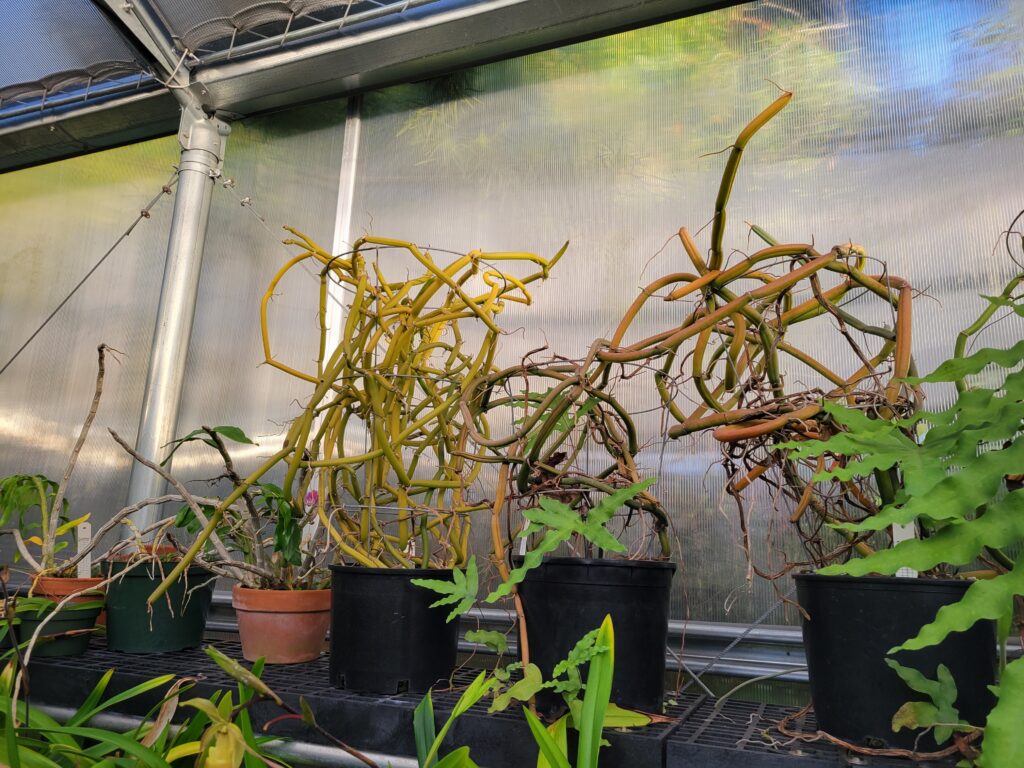
Learning about horticulture was definitely a different but interesting experience as it is an important side of zoo conservation. The interns could truly see the passion and dedication Mrs. Powell has for plants from hand pollinating flowers to helping save certain plant species from going extinct. This was a fantastic last week for the interns, leaving them with an adventure they will always remember.
Week Seven, Fall Session 2021




